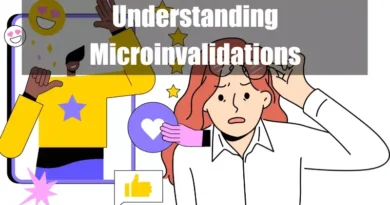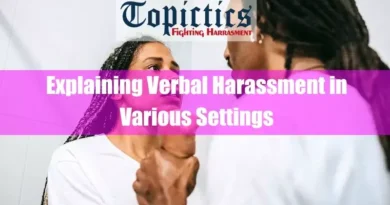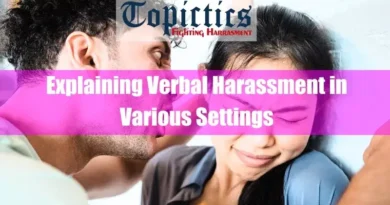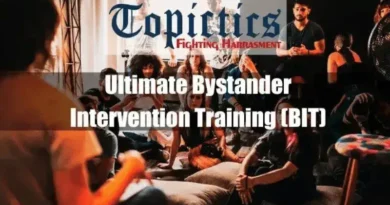Understanding & Addressing Microinsults
Takeaways
| Key Points |
|---|
| Microinsults are subtle, often unintentional discriminatory actions stemming from unconscious biases, which target marginalized groups and reinforce feelings of inferiority. |
| These insults typically manifest as demeaning remarks or behaviors, such as labeling assertive women as “aggressive” or complimenting minorities on their English, implying surprise at their competence. |
| Common examples include backhanded compliments, stereotyping, and exclusion in social or professional settings. |
| Addressing microinsults requires raising awareness, encouraging open dialogue, applying appropriate interventions based on the situation, and creating support systems for those affected. |
Introduction to Microinsults
Microinsults are a form of microaggressions that involve subtle, often unintentional discriminatory remarks or actions directed at marginalized groups. While these typically arise from unconscious biases, they can come from anyone, though often from individuals in positions of greater societal power. Unlike overt discrimination, microinsults are harder to detect, making them more insidious in social and workplace environments. Despite seeming minor in isolation, they can accumulate over time, leading to significant psychological and emotional harm.
Definition and Characteristics of Microinsults
Microinsults are typically subtle, demeaning remarks or behaviors that suggest that a person’s identity is inferior. Though not always intended to harm, these comments communicate disrespect or condescension. For example, a woman who speaks assertively might be labeled as “aggressive,” while the same behavior from a man is praised as leadership. Similarly, a person from a racial minority might be told they “speak good English” despite being a native speaker, implying surprise that someone from their background is articulate.

One of the defining aspects of microinsults is that they often arise from unconscious biases. The individuals delivering these insults may not even realize the hurtful nature of their words, making it difficult for the person on the receiving end to address the insult without facing additional scrutiny or disbelief. Microinsults, therefore, contribute to a hostile environment that perpetuates feelings of exclusion and marginalization.
History
The concept of microinsults, a form of microaggressions, was introduced by psychiatrist Chester M. Pierce in 1970. He focused on the subtle, often unconscious, slights that contribute to the marginalization of Black Americans. Over time, researchers like Derald Wing Sue expanded on these ideas, identifying how microinsults and other microaggressions affect individuals based on race, gender, and other identities, causing cumulative harm. Sue’s work broadened the concept’s application to counseling and social contexts. Kimberlé Crenshaw, though not directly involved in microinsults, introduced “intersectionality” in the late 1980s, highlighting how various forms of discrimination overlap, enriching the understanding of how these subtle slights fit into broader structural inequalities.
Common Examples of Microinsults
Microinsults can manifest in various ways, including professional settings, social interactions, and health care. Some common examples include:
- Backhanded Compliments: Praising someone in a way that simultaneously belittles their group, such as telling a Black professional, “You’re so articulate,” which implies that people from their group are typically not well-spoken.
- Stereotyping: Making assumptions based on someone’s background, such as assuming a woman is less competent in technical roles or that a person of color was hired solely due to affirmative action.
- Exclusion: Ignoring or talking over someone from a minority group in meetings while giving more attention to others.
These types of interactions often go unnoticed by those who are not the target, but for the person experiencing them, they serve as constant reminders of their marginalized status.
Overall Well-being Impact of Microinsults

Although microinsults may seem insignificant, their psychological impact can be significant, contributing to chronic stress, anxiety, and feelings of powerlessness for those who experience them regularly. These subtle discriminatory remarks or behaviors create ongoing stress as individuals must constantly navigate and address these slights.
Over time, the cumulative effects of microinsults can lead to more severe mental health issues, including depression, low self-esteem, and burnout. The stress caused by microinsults also affects physical health, often resulting in conditions like high blood pressure, sleep disturbances, and gastrointestinal problems, ultimately diminishing overall well-being.
Addressing Microinsults

Addressing microinsults requires a multifaceted approach, focusing on awareness, open dialogue, intervention, and support. Creating an environment where these behaviors can be safely challenged is crucial.
- Education and Awareness: Raising awareness about microinsults’ existence and harmful effects is a key step. Many individuals engage in them unconsciously, so educating people on the impact of their words and actions can reduce occurrences.
- Creating Open Dialogue: Encouraging conversations about microinsults fosters inclusivity. Workplace training on unconscious bias and cultural sensitivity can help dismantle power dynamics and promote mutual respect.
- Intervention Strategies: Addressing microinsults without attacking the person involved can open the door to productive dialogue. For instance, questioning the intent behind a comment and explaining its potential harm can raise awareness and prevent future incidents.
- Support Systems: Support networks, including counseling and peer groups, provide vital coping mechanisms for individuals encountering microinsults. Professionals experienced with marginalized communities can offer additional support.
Organizations should implement clear anti-discrimination policies, provide training on unconscious biases, and establish reporting channels. These measures, along with non-confrontational intervention strategies and strong support systems, help foster an inclusive, accountable environment.
Microinsults in the Workplace

In the workplace, microinsults often manifest as subtle discriminatory remarks or behaviors directed toward employees based on their race, gender, age, or other marginalized characteristics. These behaviors can profoundly affect employee morale, engagement, and productivity. Microinsults in professional environments may come in various forms:
- Gender-based assumptions: For example, women in leadership roles might be labeled as “bossy” or “too emotional” for demonstrating the same assertiveness that is praised in their male counterparts. This undermines women’s authority and perpetuates gender stereotypes.
- Racial microinsults: A common microinsult occurs when employees of color are told that they were hired due to affirmative action, suggesting they did not earn their position based on merit.
- Exclusionary practices: Individuals from underrepresented groups may be talked over in meetings or not invited to important discussions, subtly conveying that their input is less valuable.
The cumulative effect of microinsults in the workplace can lead to feelings of isolation and chronic stress, ultimately affecting job performance and job satisfaction. These subtle insults contribute to a hostile work environment, increasing the likelihood of burnout and turnover among marginalized employees.
Microinsults in Educational Settings

Microinsults also play a significant role in educational environments, where students from diverse backgrounds may face subtle forms of discrimination from peers, teachers, or administrators. These interactions can create barriers to academic success and personal development.
- Stereotype-based assumptions: For instance, teachers might assume that a student from a minority background is less capable academically, expressing surprise when the student performs well. This backhanded compliment reinforces the stereotype that people from certain groups are inherently less intelligent.
- Cultural insensitivity: Microinsults in schools can also take the form of dismissing or trivializing a student’s cultural background, such as asking a student from an immigrant family, “Where are you really from?” or pronouncing their name incorrectly without making an effort to learn it.
Such microinsults can undermine a student’s confidence and motivation, leading to disengagement and lower academic performance. Over time, these students may internalize the message that they do not belong, which can affect their mental health and future educational aspirations.
Microinsults in Social Interactions

In social settings, microinsults often occur in the form of everyday interactions, where biases are unconsciously expressed. These exchanges, though seemingly benign, have significant implications for the targets.
- Complimenting an exception to a stereotype: Telling a woman, “You’re good at math for a girl,” or a person of color, “You’re so well-spoken,” implies that their achievement is unusual for their demographic, reinforcing the very stereotypes the comments pretend to break.
- Racial or cultural assumptions: Asking a person of color if they “really belong” to a particular community or culture or assuming that someone who looks different from the majority is not from the country can make them feel excluded.
Social microinsults create a sense of alienation for those on the receiving end, causing them to feel as though they don’t belong or are being scrutinized for their identity. These experiences contribute to a sense of invisibility and marginalization, reinforcing social divisions.
The Role of Microinsults in HealthCare
Microinsults are especially concerning in healthcare settings, where they can lead to disparities in treatment and outcomes. Patients from marginalized backgrounds may face microinsults from healthcare providers, which can damage trust and deter them from seeking necessary care.
For instance, studies have shown that Black patients may be perceived by some healthcare providers as exaggerating their pain or being more likely to abuse pain medications, leading to fewer prescriptions for pain relief. This disparity in treatment is rooted in historical biases and false beliefs about biological differences, such as the misconception that Black patients have a higher pain threshold. These biases negatively impact the quality of care that Black patients receive, especially in pain management.
Addressing microinsults in health care requires training providers to recognize their own biases and understand the cultural contexts of their patients. Healthcare professionals can improve patient satisfaction and health outcomes by fostering a more inclusive and respectful environment.
Conclusion
Microinsults are a pervasive and harmful form of discrimination that, while often overlooked, have significant psychological and emotional impacts. Whether in the workplace, social interactions, or healthcare settings, these subtle slights can contribute to an environment that marginalizes and disempowers individuals from underrepresented groups.
Addressing microinsults requires raising awareness, fostering open communication, and developing strategies for intervention, all of which can lead to a more inclusive and respectful society.
FAQ
What is a Microassault?
A microassault is an explicit derogatory action or remark intended to harm or discriminate against a person based on their marginalized group membership. Unlike microinsults, which are subtle, microassaults are overt and deliberate. Examples include using racial slurs, displaying swastikas, or telling offensive jokes.
What is Implicit Bias?
Implicit bias involves unconscious attitudes or stereotypes that affect our understanding, actions, and decisions. These biases can lead to microinsults when individuals unconsciously convey rudeness or insensitivity toward marginalized groups.
What is a Stereotype Threat?
Stereotype threat is the situational predicament where individuals feel at risk of conforming to stereotypes about their social group. This can lead to anxiety and reduced performance, and microinsults can exacerbate this threat by reinforcing negative stereotypes.
What is Unconscious Bias?
Unconscious bias refers to social stereotypes about certain groups of people that individuals form outside their conscious awareness. Everyone holds unconscious beliefs about various social and identity groups, and these biases can manifest as microinsults.
What is a Backhanded Compliment?
A backhanded compliment is a remark that appears to be a compliment but also contains a subtle insult. In the context of microinsults, it can demean a person’s identity while seemingly offering praise. For example, telling a person of color, “You’re so articulate,” implies that they are surprisingly well-spoken.
What is Environmental Microaggression?
Environmental microaggressions are systemic and environmental forms of microaggressions that occur on a macro level. They include the lack of representation of certain groups in media, cultural institutions, or leadership positions, subtly conveying messages about belonging and worth.
What is Marginalization?
Marginalization is the process by which certain groups are pushed to the edge of society by not allowing them an active voice, identity, or place in it. Microinsults contribute to marginalization by subtly demeaning individuals and reinforcing their peripheral status.
What is Intersectionality?
Intersectionality is a framework for understanding how various forms of social stratification, such as race, gender, and class, overlap and intersect. Microinsults can be compounded when they target multiple aspects of an individual’s identity, leading to unique experiences of discrimination.
What is Code-Switching?
Code-switching involves adjusting one’s speech, appearance, behavior, or expression style to conform to different cultural norms, often to minimize attention to one’s marginalized identity. Microinsults can prompt individuals to code-switch to avoid further subtle derogatory comments.
What is Gaslighting?
Gaslighting is a form of psychological manipulation where a person seeks to make someone question their reality or perceptions. In the context of microinsults, perpetrators might gaslight victims by downplaying the insult or suggesting they’re being overly sensitive.
What is Cultural Appropriation?
Cultural appropriation involves adopting elements of one culture by members of another culture, often without permission or understanding. This can be a form of microinsult when dominant groups use cultural symbols of marginalized groups in a way that diminishes their significance.
What is Tokenism?
Tokenism is the practice of making only a perfunctory or symbolic effort to include members of minority groups, often to give the appearance of equality. This can manifest as a microinsult when individuals are included superficially, undermining their contributions.
What is Othering?
Othering is the process of perceiving or portraying someone as fundamentally different or alien. Microinsults often contribute to othering by subtly highlighting perceived differences demeaningly.
What is Impostor Syndrome?
Impostor syndrome is the internal experience of believing that one is not as competent as others perceive them to be. Microinsults can exacerbate this feeling by subtly undermining an individual’s confidence in their abilities.









